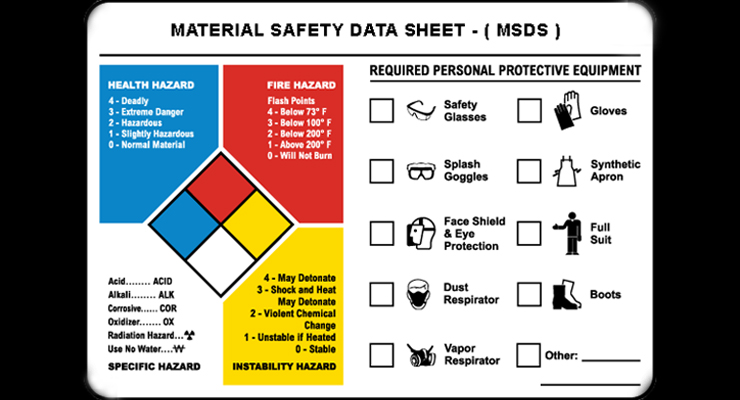
MSDS stands for "Material Safety Data Sheet." It is a document that provides detailed information about the properties of a particular chemical product, including its potential hazards, safe use, storage, handling, and emergency measures. MSDS is an important tool for workers, emergency responders, and anyone else who may come into contact with or be exposed to a chemical substance.
Key information typically found in an MSDS includes:
1. Product Identification: Name, manufacturer information, and common names of the chemical.2. Hazardous Ingredients: A list of hazardous components present in the product, along with their concentration.
3. Physical and Chemical Properties: Information about the physical and chemical characteristics of the substance, such as appearance, odor, boiling point, and solubility.
4. Fire and Explosion Data: Details on the flammability of the substance and the conditions under which a fire or explosion may occur.
5. Reactivity: Information about the chemical stability of the substance and any potential reactive hazards.
6. Health Hazards: Details on the potential health effects of exposure to the chemical, including symptoms and routes of exposure.
7. Preventive Measures: Recommendations for safe use, handling, and storage of the chemical, as well as personal protective equipment (PPE) that should be used.
8. First Aid Measures: Procedures to follow in case of exposure, including first aid measures and recommended medical treatment.
9. Spill and Leak Procedures: Instructions on how to respond to spills or leaks of the substance, including cleanup procedures.
10. Transportation Information: Guidelines for the safe transportation of the chemical.
The purpose of an MSDS is to ensure that individuals working with or around hazardous substances are informed about the potential risks and proper safety measures.
-
 A Comprehensive Guide to Refrigerated ContainersJun 17,2025
A Comprehensive Guide to Refrigerated ContainersJun 17,2025 -
 Guide to 20ft & 40ft Shipping Container Dimensions for Global LogisticsJun 17,2025
Guide to 20ft & 40ft Shipping Container Dimensions for Global LogisticsJun 17,2025 -
 How to track shipments sent from ChinaMay 13,2025
How to track shipments sent from ChinaMay 13,2025 -
 Guide to Importing and Shipping Cars from China to UAEMay 13,2025
Guide to Importing and Shipping Cars from China to UAEMay 13,2025 -
 Guide to Importing and Shipping Camping Gear from ChinaMay 07,2025
Guide to Importing and Shipping Camping Gear from ChinaMay 07,2025 -
 Shipping from China to YemenMay 06,2025
Shipping from China to YemenMay 06,2025

